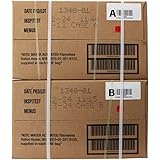Understanding the Basics of Emergency Shelter
What is Emergency Shelter?
Emergency shelter is essentially a safe haven during unexpected situations like natural disasters, extreme weather, or other crises. This doesn’t always mean a physical building. Sometimes, it can be a designated area, or even a temporary structure you create. It’s all about keeping you safe from the elements and other threats.
I’ve found that having a clear understanding of what constitutes emergency shelter helps in effectively preparing for potential disasters. Whether it’s a tent set up in my backyard or a designated area in a community hall, knowing what I can rely on is crucial.
When I first started my preparedness journey, I thought emergency shelter only meant staying indoors. But after doing my research, I learned about various shelters, including community shelters and basic structures that can be erected in the wild. Each type serves a distinct purpose depending on the scenario.
The Importance of Planning
Planning for emergencies is a step that many overlook until it’s too late. I learned first-hand how essential it is to have a plan in place. You need to know where the closest shelter is, how to get there, and what to take along when the time comes.
A well-thought-out plan includes communicating with family or friends about your shelter arrangements. I remember sitting down with my family and mapping out our escape routes and designated meeting spots. That way, everyone knows what to do when the unexpected hits.
Additionally, involving your loved ones in the planning process makes it feel less daunting. I found it to be a valuable bonding exercise that also sparked discussions about safety and well-being, which are sometimes tough to tackle in normal conversation.
Types of Emergency Shelters
There are various types of emergency shelters, including tents, cabins, or even your car in certain situations. One of my favorites is finding a sturdy tent that can be pitched quickly, as it provides instant protection without the need for extensive setup. It’s all about knowing what options are available.
I also learned about community shelters offered during emergencies, like schools or gymnasiums equipped to house those in need. Understanding these options ensures that I’m never caught off-guard, and it allows me to make informed decisions based on my situation.
== > What if ... Get a FREE Subscription to PREPARE
Lastly, creating an emergency shelter in the wilderness can be a lifesaver. I’ve practiced building a debris hut, which offers excellent insulation and shelter. While it seems primitive, it’s amazing how effective such structures can be in a bind.
Gathering Supplies for Your Shelter
Essential Gear
When it comes to setting up a shelter, having the right gear makes a world of difference. I always carry a compact emergency kit, which includes things like a flashlight, water purification tablets, and some energy bars. These items add security while waiting for more permanent shelter arrangements.
Furthermore, I suggest including some basic first-aid supplies. Accidents happen, and having the essentials like band-aids, antiseptic, and pain relievers can really come in handy. I’ve had moments when a simple scrape turned serious, and being prepared made all the difference.
Also, don’t forget warmth! An emergency blanket or sleeping bag can be a game-changer. I remember being caught in a sudden storm one night while camping, and luckily I had packed a thermal blanket. It kept me warm until the rain stopped.
Food and Water Considerations
Staying nourished and hydrated should never be underestimated. For my own emergency kit, I always include high-calorie, non-perishable food items like nuts, granola bars, and dried fruits. They take up minimal space and provide a good energy boost when you’re on the move.
Water is, of course, vital! I keep compact water bottles and a portable water filter in my kit. There have been times when potable water was hard to come by, and having the ability to filter water from a fresh source is a must.
This is an area where I recommend you also think long-term. Emergency rations are great, but I also look into ways to replenish supplies. This could include having seeds for gardening or knowing where to forage locally, which can be invaluable during prolonged emergencies.
Creating a Comfortable Space
Once you’ve located your shelter and gathered your gear, creating a comfortable space is vital. I often find myself using blankets and tarps to create a cozy corner. Trust me, a little bit of comfort can vastly improve your morale in a tough situation.
Additionally, keeping your space organized helps reduce stress. I’m really big on keeping my gear neatly stored in my backpack or a container. Not only does this ease the stress of searching for essentials, but it also helps in maintaining a sense of normalcy amidst chaos.
Lastly, don’t underestimate the power of entertainment! Whether it’s a deck of cards, a book, or even an old journal, having something to engage your mind can make time pass a little easier. I’ve always kept a little something on me, and it’s amazing how it can shift your focus in tough times.
Get Preparedness and Self-Reliance Tips. Subscribe Now!
Staying Informed and Safe
Monitoring Weather and News
When I’m preparing for any sort of emergency, staying updated on the weather and news through reliable sources is crucial. I often download weather apps on my phone that provide real-time alerts to keep me informed about incoming storms or other disasters in my area.
I’ve also learned that local radio stations can be a treasure trove of information during emergencies, should the power go out. I remember listening to updates while sheltering from a hurricane, which really helped me gauge the situation and make informed decisions.
Always keep some extra batteries handy for your radio. Staying informed isn’t just about keeping up to date; it’s about knowing when it’s time to take action and when to remain in place.
Establishing Communication Channels
In emergencies, communication can be your lifeline. I always make sure to have a backup way to communicate—especially when cell towers may go down. Two-way radios have worked wonders for me during outdoor adventures, and I’ve begun incorporating them into my emergency plans too.
Don’t forget about establishing a family communication plan. Picking a reliable contact outside your immediate area can really help if things get chaotic. I still remember picking my cousin as our “go-to” person. It was comforting knowing we had that structure in place.
Also, don’t overlook social media! Keeping connected via platforms can offer instant updates and allow you to reach out to your community for additional support if needed.
Assessing Risks
Every location has its unique threats, whether it’s earthquakes, floods, or civil unrest. I often assess the risks in my area and adjust my emergency plans accordingly. Knowing what to potentially expect helps me tailor my supplies and shelter plans to fit specific scenarios.
In my experience, attending local emergency preparedness workshops can be super beneficial. Not only can you gain knowledge, but it’s a great way to meet others who are just as committed to being prepared. Community resources often provide vital insights on local risks you may not have considered.
Lastly, it pays to keep history in mind. I remember reading up on past disasters in my area, which really highlighted potential risks. It motivated me to adapt my plans and gear strategically for what was most likely to occur.
Conclusion and Final Thoughts
By following the steps I’ve learned over time, creating a solid emergency shelter plan doesn’t have to be overwhelming. Stay informed, gather your gear, and don’t hesitate to involve your loved ones. The more prepared you are, the more peace of mind you’ll have.
Remember, emergencies can happen anytime, so make sure you’re ready to face anything with a smile and a plan. You’ll not only be protecting yourself but also those around you.
From my personal experience, I can confidently say that a little preparation goes a long way towards keeping you and your family safe. So get out there, make a plan, and remember: you got this!
Frequently Asked Questions
What is the most important item to have in an emergency shelter kit?
The most crucial item is often a reliable source of water. Staying hydrated can be lifesaving, so make sure to include water purification methods in your kit.
How can I effectively prepare my family for an emergency?
Communicate openly with your family about your emergency plans. Involve everyone in discussions and drills to ensure everyone knows their roles and where to go in case of danger.
Are temporary shelters safe during disasters?
Temporary shelters can be safe if constructed properly and in safer areas. Always assess your surroundings for potential threats and stay informed about weather patterns.
What is the best way to stay informed during an emergency?
Utilizing multiple channels—like weather apps, local news stations, and social media—can help you stay updated on the latest information regarding your situation.
How can I customize my emergency kit to fit my needs?
Every family’s needs vary, so consider factors like pet supplies, medical supplies for specific health conditions, and activities for keeping children occupied. Tailor your kit accordingly!






